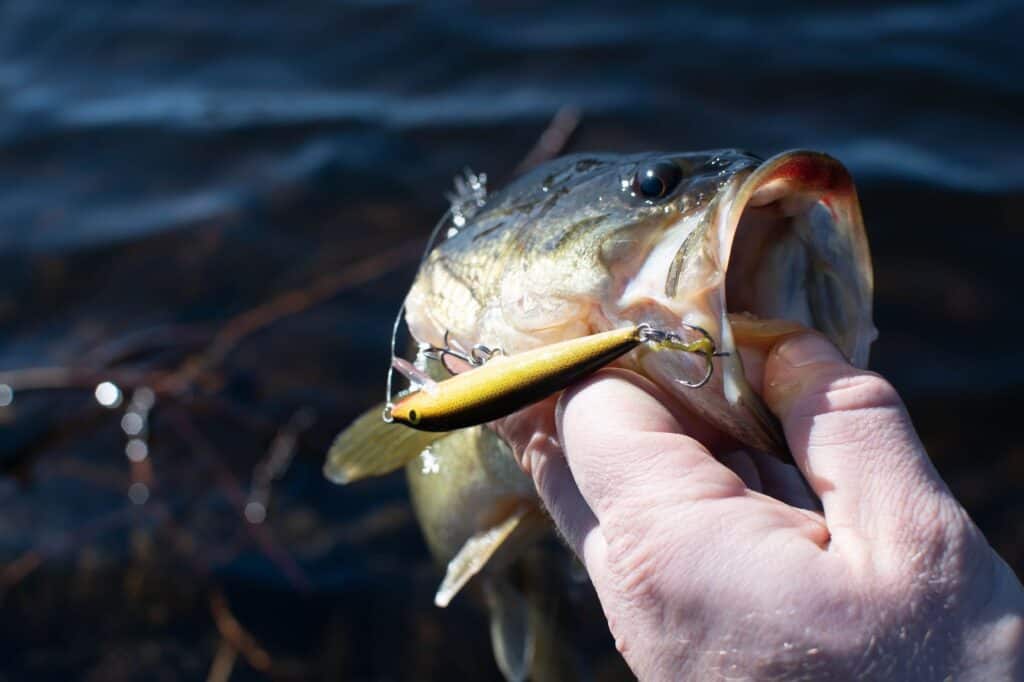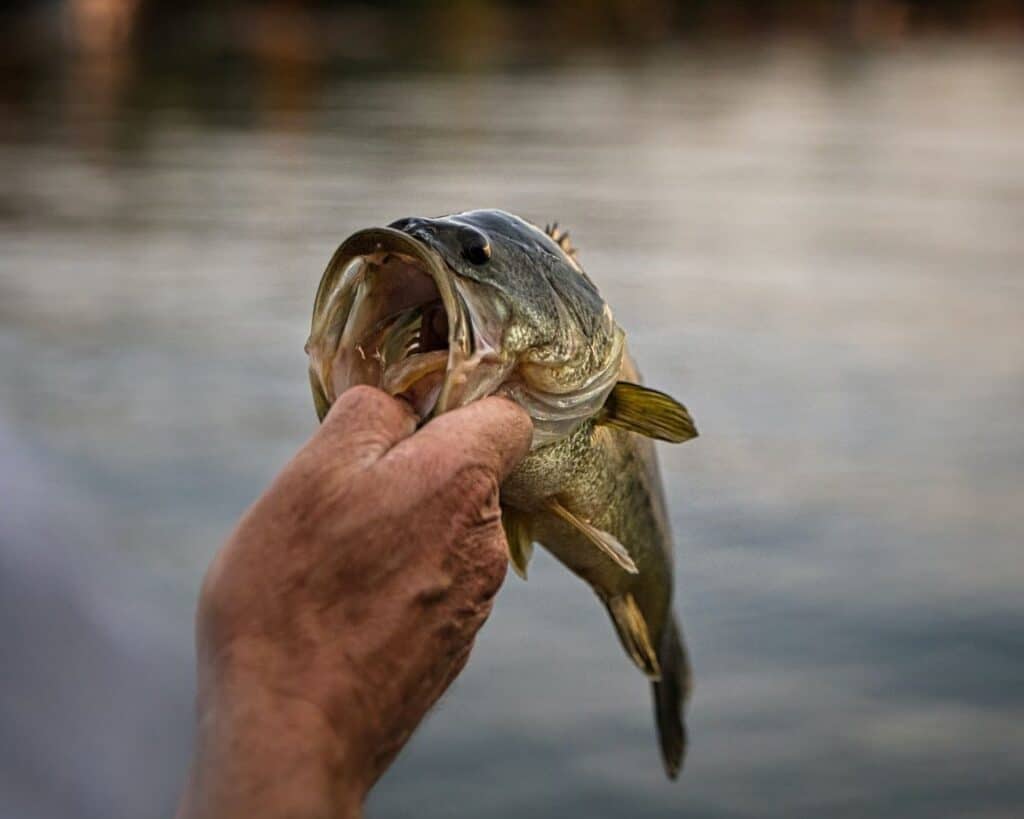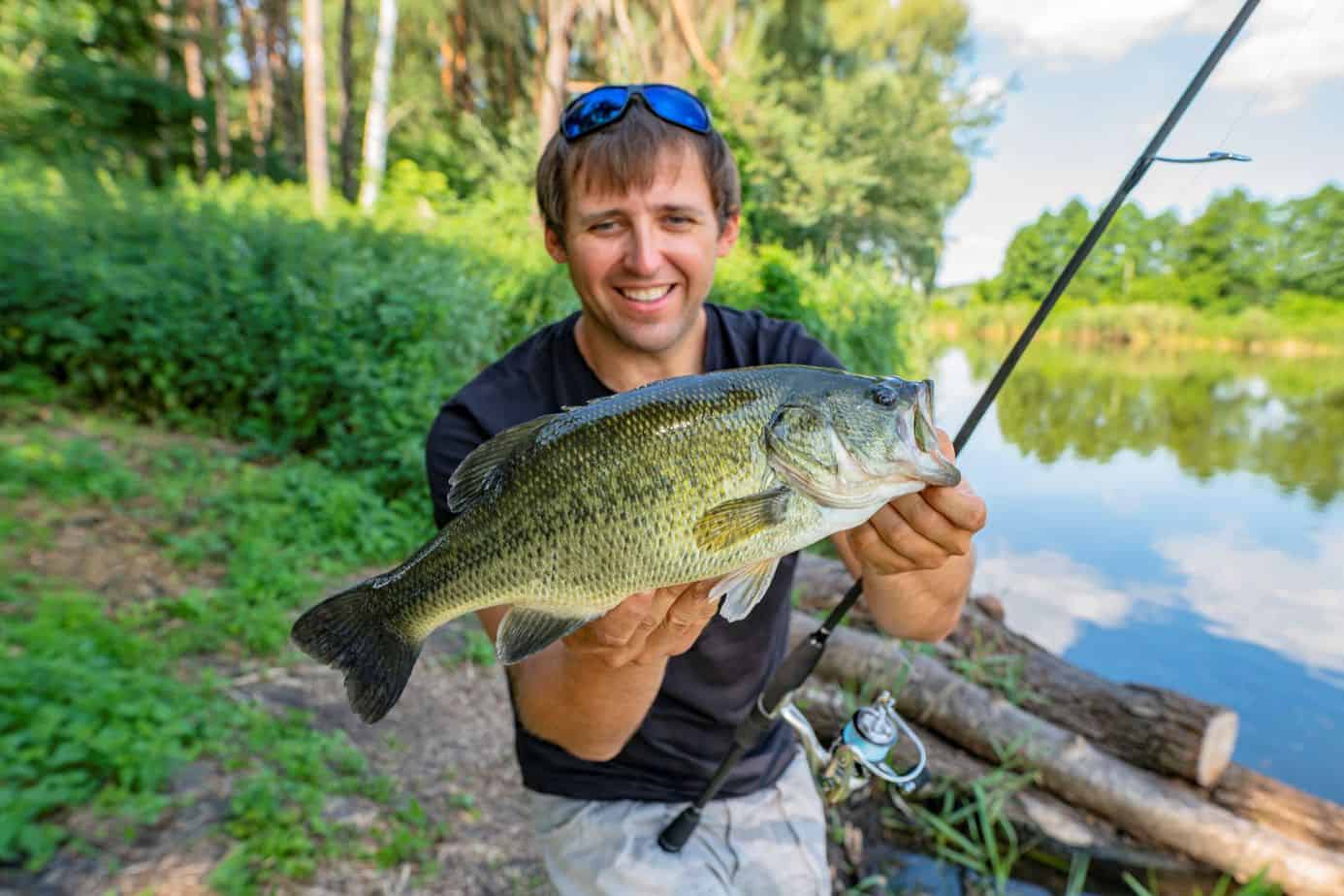The largemouth bass is one of the most fished for species in the US, but many anglers balk at the thought of eating them. Here we ask whether more anglers should be sampling the flavor of this popular fish.
So are largemouth bass good to eat?
Largemouth bass can be delicious if prepared correctly. Despite not being known as the tastiest freshwater fish, it can make an excellent meal if caught in clear waters. Murky water flavors the fish and gives a disappointing result. It has a firm and tender texture with white meat and can be delicious if cooked correctly.
We have compiled a few techniques and suggestions to help you from pond to plate for the best ways to cook this popular but under eaten fish.
Best Ways To Cook Largemouth Bass
Preparing Largemouth Bass
Don’t be tempted into thinking that biggest is best! Larger bass are usually females that have bred many times and are not suitable for eating. Also, be aware that larger fish can have more worms; an ideal size for eating is about three to four pounds.
The largemouth needs to be kept cold as soon as caught. If not, the meat of the fish will turn to mush.
Cut off all fins, then with a good bendy fillet knife, cut just under the head and cut to the bone. Then cut along the lateral line of the top of the fish right to the tail. Place the fish on its side and slice along the rib cage right to the tail, but do not remove it from the tail. Flatten the fillet out, then make a small cut to the tail end and, applying pressure remove the fillet from the skin. Repeat on the other side of your fish. Throw away the carcass and wash the fillet off.
If you have caught a young female, you may want to keep the roe sack for frying, but careful when removing it, so you don’t rip the sac.

Cooking Largemouth Bass
The flavor of largemouth is very fishy. It can be quite smelly as well, so it may be more suited to outdoor cooking. Your experience with eating this fish will be enhanced if you ensure it is fished from clean waters.
Shallow or deep-fried fillets or nuggets are simple to prepare and cook. Use fresh herbs and seasoning and mix with cornflour. Rub the fillets or nuggets in the flour mix, then fry! It is that simple. A homemade tartar sauce works well with this dish.
Griddle the fillets sprinkled with garlic, paprika (cayenne pepper as well, if you fancy a spicier touch), and black pepper. Add some fresh capers while cooking for a distinctive flavor. To cook, simply warm some butter in the griddle and fry for a few minutes on each side.
And do not forget to try frying the roe, it is quite popular, and all you need to do is roll them gently in seasoned flour and fry. Alternatively, you can just slowly fry them in a little oil or butter. Be mindful of putting the heat up too much as the sacs can explode! Oh, and don’t cook for too long as they become tasteless.
Eating Largemouth Bass
Many vegetables go well with largemouth eating. With griddled fish, sweet potato fries are great, especially accompanied with a nice cold beer.
Try roasted largemouth with pan-fried peppers, zucchini rounds, and red onions.
Other Noteworthy Information
Largemouth bass can have a high mercury content, and so it is best not to overindulge.
Keep clear of catching your largemouth dinner in murky or stagnant waters. Fish caught in these waters are horrible tasting.
It is high in protein, and low in fat, so it is a good healthy fish to eat if you follow the guidelines.
Largemouth Bass Fishing Tips and Techniques
In this section, we will discuss some tips and tricks to help you catch this wonderful fish.
Largemouth bass are not particularly fond of the intense light of the day. For this reason, most anglers recommend that the optimum time to fish for this species is from dawn through to early morning and then from late afternoon through to dusk. This is not a hard and fast rule, but if you are fishing in the heat of the day, it is best to seek out sheltered spots and around obstacles like fallen logs or overhangs where the bass may be laying up.
For the time of year, it is best to avoid extremes of temperature. The height of summer and mid-winter are not renowned as being a great time for largemouth bass angling. It is best to avoid the extremes. In colder waters, the fish have a slower metabolism and can be lethargic. When the water temperature is higher at the height of summer, the fish also become lethargic and less likely to feed.
Gear and Bait
Apart from the availability of fishing, one of the main reasons that largemouth bass angling is so popular is that just about any rod and reel outfit will get you started. If all you have is a basic spinning rod and reel, a couple of hooks, some weights, and a few lures, you are pretty much set to go largemouth bass fishing. Of course, a tackle box with essential terminal tackle like swivels and split rings is useful in just about any type of fishing, and bass fishing is no different.
For baits, many bass anglers swear by soft plastic baits. These are simply baits that come in various colors and flavors and can be molded directly onto your hook. Of course, as with most fish, bass will find it hard to resist a nightcrawler.
A selection of lures and spinnerbaits are essential as well. Some of the popular ones include the Lipless Crankbait, Stick Bait, Skirted bass Jig, Square Bill Crankbait, Tube Bait, and many others. It is always better to consult with local anglers as they can tell you what is most successful in their home waters.

Largemouth Bass Facts
This is the most commonly fished for species across the entire United States. They are a fascinating species and are the state fish of several states, including Alabama and Mississippi. Here are some more interesting largemouth bass facts.
- Lifespan – largemouth bass have an average lifespan of around 16 years and have been known to live as long as 20 years. They are a species that lives longer in the wild than in captivity and never stop growing throughout their life.
- Females are Larger – Anglers are encouraged to return larger fish to the water as these are usually breeding females. It contributes to the future health of the fishery.
- Widely Fished For – There are an estimated 30 million anglers in the US that regularly fish for largemouth bass.
- Distribution – Initially, its range was mainly along the eastern half of North America, from Southern Canada as far south as Florida and Mexico. It has since been stocked in virtually every state and many countries worldwide.
- They Build Nests – Adult males are the nest builders; they are usually in about 5 or 6 feet of water. Once the nest is built, the females will lay their eggs in it. Depending on the size of the females and other environmental variables, there can be anywhere between 2,000 and 7,000 eggs per pound of body weight.
- Males Stand Guard – After the female has laid her eggs, the male largemouth will guard the nest and keep it clear of silt and debris by fanning it with his tail. The male will aggressively attack anything that strays within reach of the nest and will stay on guard duty until the eggs hatch. Depending on water temperature, this can be anywhere between 2 to 7 days. Despite 2,000 to 12,000 fry hatching from each nest, only a handful will survive into adulthood.
- Sixth Sense – Besides having a great sense of smell that allows them to follow the scent of prey and good eyesight, they also have a lateral line that provides them with the sixth sense to pick up the vibrations of prey fish.
- Size – The world record fish is shared between Japan and the US, with both fish weighing in at 22lbs 4ozs. However, these are exceptional fish. Most anglers would consider a 5lb bass to be a large fish.
Conclusion
Largemouth bass can be extremely tasty or incredibly disappointing to eat. Mainly this is due to the environment of their habitat. If you want to enjoy this fish’s flavors, where it was caught is the biggest factor. But that shouldn’t detract from the sheer pleasure of angling for this wonderful aquatic creature; 30 million Americans can’t all be wrong!
If you enjoyed this article, why not share it with your friends on Facebook or other Social Media? There are also plenty more informative, fun, and interesting articles throughout the site.
If you find this article helpful, don’t leave without sighing up for our newsletter and checking out our Recommended Fly Fishing Gear List.
Don’t forget to check out our other Fish Guide articles.
- Are Bass Good To Eat?
- What’s the Difference Between Trout and Salmon?
- Are Bonefish Good To Eat?
- What’s the Difference Between Carp and Buffalo Fish?
- Are Pike Good To Eat?
- The 7 Best Secret Rainbow Trout Baits
- Best Powerbait For Stocked Trout
- What Is The Difference Between Walleye And Pickerel?
- What Is A Tiger Trout? Where to Find One and How To Catch One


